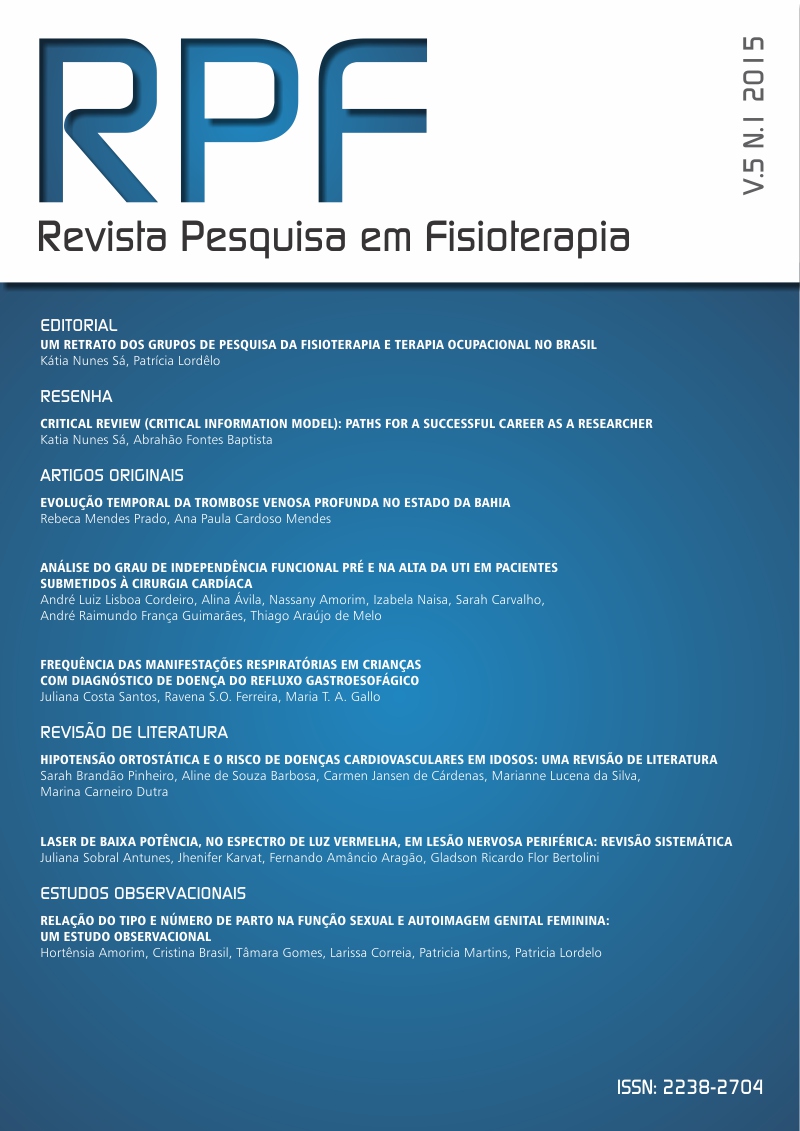FREQUENCY OF RESPIRATORY MANIFESTATIONS IN CHILDREN WITH DIAGNOSIS OF GASTROESOPHAGEAL REFLUX DISEASE
DOI:
https://doi.org/10.17267/2238-2704rpf.v5i1.389Keywords:
Gastroesophageal reflux, Signs and symptoms respiratoryAbstract
Objective: To estimate the frequency of extraesophageal manifestations the respiratory tract of children in the age group of 0 to 5 years with a diagnosis of gastroesophageal reflux disease (GERD). Methods: A crosssectional study was conducted with 130 children aged 0 to 5 years with a diagnosis of GERD, in a private practice of pediatric gastroenterology. Of these, 20 were excluded for being older than 5 years and 18 have simultaneous diagnosis of asthma. The data collection was performed with data collected in the records on the basis of a structured form, with 28 objective questions, containing variables socio demographic and clinical variables were categorized with symptoms (wheezing, cyanosis, dyspnea, cough, hoarseness, vomiting, abdominal pain and regurgitation), tests used for the diagnosis of GERD and complications such as pneumonia, Barrett’s esophagus, ulcer, apnea, bronchitis, gastritis and esophagitis, defined as present or absent. It was further investigated the quality of sleep. Results: it was observed that 55.4% were male. The majority of children, 22.8% were between 12 to 23 months. The cough was present in 42.4% and dyspnea in 27.2 %. Other symptoms still observed was the vomiting with 55.4 %, followed by the sleep disorder with 53.3% and abdominal pain with 32.6 %. The esophagitis appeared in 9.8% and gastritis with 8.7 %. The exams performed for diagnosis were the ultrasonography with 52.2% and Ph with 23.9 %. Conclusion: Respiratory manifestations present a high incidence in the GERD, however very controversial with regard to the relationship of cause and effect. GERD can cause the symptoms worsen and be the result of a respiratory pathology, which makes the diagnosis more difficult.



